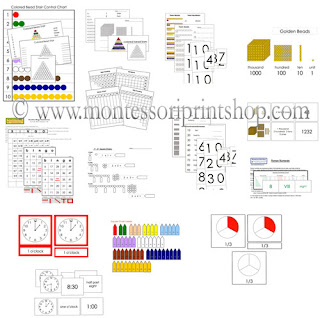More Than Just The 5 Senses
"Aesthetic and moral education are also closely connected with the training of the senses. By multiplying sense experiences and developing the ability to evaluate the smallest differences in various stimuli, ones sensibilities are refined and ones pleasures increased. Beauty is found in harmony, not in discord; and harmony implies affinities, but these require a refinement of the sense if they are to be perceived. The beautiful harmonies of nature and of art escape those whose senses are dull. "
~ Maria Montessori,
Discovery of the Child
The
sensorial materials were created to increase the child’s ability to observe,
compare, discriminate, differentiate, reason, decide, solve problems, and
appreciate our world. All of the
materials provide the child with a cognitive system where the child can get a
basis for order and logic and learn to sort their information as they explore
life with an absorbent mind.
Children,
teachers, and parents all over the world appreciate the beauty and precision
that Montessori used in designing the sensorial materials. The materials are auto-educational, meaning
they can be used with no teacher/adult interactions allowing the child to work
independently and successfully.
There
are ten senses that are introduced in the sensorial materials:
1. Visual Discrimination
a) of Size- Exploration of
short/tall, thick/thin, big/small and grading of sizes
 |
| knobless cylinders, discrimination of size |
 |
| color tablets, discrimination of color |
c) of Form- Working with shapes,
and a basic knowledge of geometry
 |
| sound cylinders, auditory discrimination |
 |
| "it feels soft, fluttery" |
 |
| stereognostic bag |
 |
| exploring with heavy and light baskets, age 18 months |
 |
| working with smelling cylinders |
8. Gustatory- Matching, Grading,
Identifying, Trying and Testing differences in taste
 |
| baking and tasting |
9. Sense of Self- The ways in
which the Montessori environment helps to build self-knowledge,
self-confidence, and self-respect in a child.
10. Sense of Wonder- The ways in which the
Montessori environment helps to provide the child with the means to explore the
world and the beauty and joy of life.







Comments